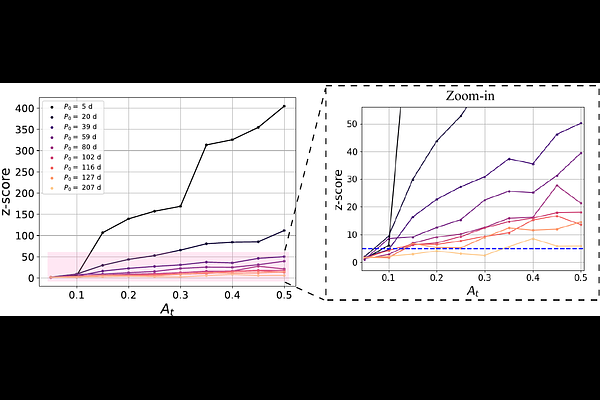Identifying Compact Chirping SMBHBs in LSST using Bayesian Analysis

Identifying Compact Chirping SMBHBs in LSST using Bayesian Analysis
Chengcheng Xin, Maximiliano Isi, Will M. Farr, Zoltán Haiman
AbstractThe Legacy Survey of Space and Time (LSST) is expected to observe up to ${\sim}100$ million quasars in the next decade. In this work, we show that it is possible to use such data to measure the characteristic frequency evolution of a "chirp" induced by gravitational waves, which can serve as robust evidence for the presence of a compact supermassive black-hole binary. Following the LSST specifications, we generate mock lightcurves consisting of (i) a post-Newtonian chirp produced by orbital motion through, e.g., relativistic Doppler boosting, (ii) a damped random walk representing intrinsic quasar variability, and (iii) Gaussian photometric errors, while assuming non-uniform observations with extended gaps over a period of 10 yr. Through a fully-Bayesian analysis, we show that we can simultaneously measure the chirp and noise parameters with little degeneracy between the two. For chirp signals with an amplitude of $A = 0.5$ mag and a range of times to merger ($t_m = 15{-}10^4$ yr), we can typically measure a non-zero amplitude and positive frequency derivative with over $5\sigma$ credibility. For binaries with $t_m = 50$ yr, we achieve $3\sigma$ ($5\sigma$) confidence that the signal is chirping for $A \gtrsim 0.1$ ($A > 0.2$). Our analysis can take as little as 35 s (and typically $<$ 10 min) to run, making it scalable to a large number of lightcurves. This implies that LSST could, on its own, establish the presence of a compact supermassive black-hole binary, and thus discover gravitational wave sources detectable by LISA and by Pulsar Timing Arrays.